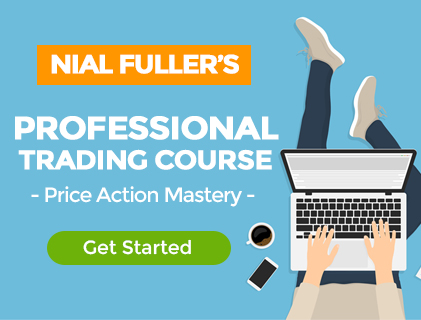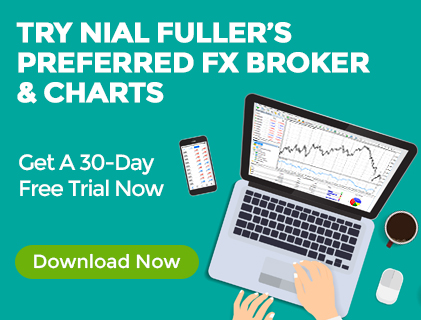Run Your Trading Like a Business
 Trading is quite different from other businesses, but it is still a business and you need to run it like one and think of it as one. Most traders start out on the wrong path right out of the gate by treating their trading like a trip to the casino rather than a business that requires structure and planning and which has real costs associated with it.
Trading is quite different from other businesses, but it is still a business and you need to run it like one and think of it as one. Most traders start out on the wrong path right out of the gate by treating their trading like a trip to the casino rather than a business that requires structure and planning and which has real costs associated with it.
If you want to succeed as a trader, the very, very first step, is running your trading like a business and viewing it as one.
Just as with any other business, the way you make profit as a trader is by bringing in more revenue than your out-going costs. Also, like any other business, the way you lose money and ultimately go out of business, is if your costs are larger than your revenue.
Your costs of doing business in the market
- Losing trades
The main costs of running a trading business are losing trades. Yes, that’s right, losing trades are and should be thought of as a cost of running a trading business. It is critical you view them this way, because it helps you to become less emotionally influenced by losing trades. Think of it this way; a restaurant owner doesn’t get sad or angry when he has to re-order food or pay his employees, because he knows those things are just the costs of doing business.
So, your biggest cost of business as a trader are the losses you take from losing trades. Every trader on Earth, no matter how profitable, has losing trades. You cannot avoid them, so just accept that you will have to deal with the cost of losing trades and rather than try to avoid them, learn how to deal with them properly, but you must accept them as an on-going cost first (more on how to deal with this cost later).
Another smaller cost associated with trading is that of broker spreads or commissions. This will be an on-going cost for you and you should remember that every time you enter a trade, you are paying a spread or commission to your broker. This is a real cost and you should think of it as such. Obviously, day-traders who trade very frequently have much higher costs related to spreads or commissions than do swing traders like me (and you, I hope).
- Set up a trading office
The next biggest cost you will have as a trader is setting up your trading office. Now, this cost can vary greatly from trader to trader, but at the very least, you will need a good laptop and a computer desk and chair. Some traders may opt for a multi-monitor computer setup and an expensive computer desk and chair, which obviously could get very expensive. However, this is not necessary to trade profitably. All you really need is a good laptop and an internet connection.
- The good and bad news about trading costs
Ok, now that we have discussed the primary costs of doing business as a trader, let’s first discuss the good news about them. The good news is that you know what your costs are and there aren’t very many of them. Also, you can contain your costs as a trader very easily and effectively. This containment is done by managing your risk as you trade. This means, not risking more than you can truly afford to lose on any one trade, which is done by using stop losses of course. Knowing how to properly place stop losses will also be a big factor in managing risk and also in maximizing reward. A properly placed stop loss can be the difference between a losing trade and a winning trade in many cases.
Now, for the bad news about trading costs. If you do not manage them and contain them properly, they can grow out of hand, very, very quickly. In fact, if you don’t manage your risk properly as you trade, you can end up losing all of your trading money very, very fast, faster than in other businesses for sure.
Knowing this bad news about trading costs, it should make you re-read the previous paragraph again on the good news of trading costs, and remind yourself that these costs can effectively be managed and contained, but it’s up to YOU to do it!
So, now you know the primary costs of running your trading business, now there might be others, but these are the biggest ones for most traders. Your goal is to make sure that you make enough money from your winning trades (revenue) to cover all your costs and then some, so that you make a profit.
How to make your trading business profitable
Now, it’s time to learn how to run your trading business at a profit, rather than a loss. There is obviously quite a bit that goes into being a consistently profitable trader, and I can’t cover everything in one short article, but I will give you a brief run-down of the main things you need to focus on. For more information, check out my trading course.
As mentioned previously, a trading business runs at a profit when the revenue (money from winning trades) is offsetting the costs (losses, office setup, etc.).
The question then becomes, what can you do to make sure your trading revenues far surpass your trading costs? Here is an overview:
- Focus on risk to reward ratio – On every trade you take, you need to decide if the risk reward potential is enough to make the trade worthwhile. You need to be sure at least a 2R or greater reward is possible whilst making sure you have your stop loss placed properly.
- Don’t trade a lot – You don’t need to trade with high frequency to make money. You need to instead focus on learning to trade properly, on taking high-quality / high-probability trades. This is the point I make in my articles on trading like a crocodile and trading like a sniper.
- Focus more on money management than anything else – By money management, I mean managing and containing your risk per trade and also on making sure a 2R or greater reward is possible and also on trade exits. Most traders focus too much on entries and waste of time things like trading indicators, when in reality, they should be far more focused on money management.
- Make sure you know how to read price action properly – Finally, if you don’t understand how to read a price chart, you aren’t going to get very far. The basis of any successful trading business is understanding price dynamics and how to read and trade from pure price action.
Conclusion
What I want you to do next, is create a trading plan. A comprehensive yet concise trading plan is necessary for running a successful trading business. You can’t just ‘wing it’ and hope for the best. This is what most traders do and how do most traders end up? Losing money and eventually dropping out.
For more in-depth help on building your own trading plan and on all of the topics discussed in today’s lesson, check out my trading education course and members’ community.






You don’t need a 2R reward
You can operate on a 1:1 risk reward with a 60% gain rate (winrate) and still be profitable long term.
Thank you for the great insight.
That is a very helpful article .am on my way of becoming a professional and profitable trader .thank you for your contribution
Excellent article as always!! I like how you incorporate the crocodile and sniper articles, two of my favourite articles in the 3 years ive been following you!!
Thank You Nail for such a wonderful information.
Eye opener, thanks Nial.
COMPREHENSIVE. THANKS NIAL.
thank you Nail. your article have improve my knowledge in trading.
I learn a lot of things as a result of this article. i pray that my God will continue to give u more wisdom. AM so impressed
Nice Article,I enjoy the setting-up office part of forex ,just computer, Internet, chair, desk and coffee,then office is set
Good post sir. New light. What we mostly as bagginesses we focus on strategy and never pay attention on other things. Salute
Nial
i think you are one of the great.Such a long time i have been reading your articles and completed your course.in my knowledge nothing effective like your article and course
but unfortunately i could not draw the resistance and support line.So it would be very appreciated if you give me some tips about support and resistance.
Thanks Nial this article is so wonderful I will try my best to follow all the rules written in it.
Thank you dear sir for teaching to me,i like to learn support resistencen
Excellent article as always Nial…
Thank you Nial. I look forward to each article you put out. It builds on my knowledge and more than that it helps to keep me on the straight and narrow!